
views
Using Commercial Scratch Removers

Use a scratch remover for deeper scratches. Fine scratches can usually be rubbed out with a cleaning product or an abrasive pad. However, very deep scratches that are obvious to see require scratch removes. You can find scratch removers for stainless steel sinks online or at local hardware stores. Check your sink's manufacturer's instructions if you still have them. This may suggest a scratch remover that works for your sink.
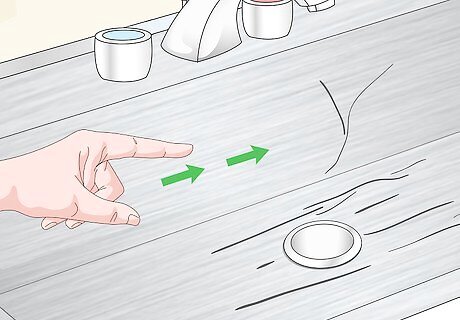
Identify the direction of your sink's grain. If you have the manufacturer's instructions, these should tell you the direction of your stainless steel sink's grain. You can also look at the sink closely to see which direction the lines of the sink run.
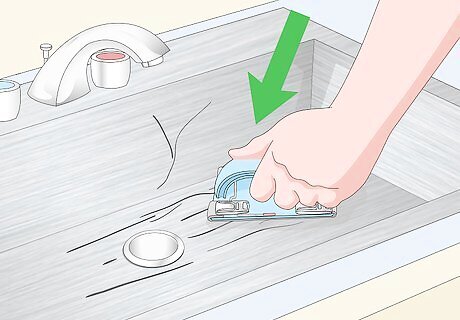
Apply the remover to the scratch. Stain removers should come with grit pads. Refer to the product's instructions and spray on the appropriate amount of scratch remover to the pad. Apply the remover to the scratch, moving in the direction of your sink's grain. Apply a light amount of pressure. Apply enough pressure that the scratch comes off the sink, but not so much that you end up damaging the sink by rubbing the grit in too deep. A powdered scratch remover should be mixed with water first. Mix 2 tablespoons of the powder with 4 or 5 drops of water, then rub it on the scratch with a damp microfiber cloth.
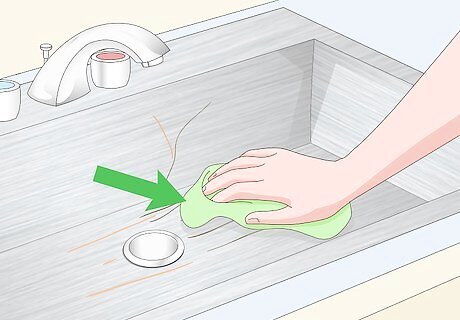
Buff out the remainder of the scratch with a softer cloth. The scratch remover kit should contain a second, lighter pad. After most of the scratch is out, switch to the lighter pad. Use this to buff out the remainder of the scratch. If the kit calls for water, add water as you buff out the remaining scratch. Your kit should provide more specific instructions on how to buff out the scratch and when to switch the pads you're using.

Rinse out the remover. After you've buffed out the scratch, use a microfiber cloth to buff out the remainder of the remover. Wipe down the surface to rinse out the remainder of the scratch remover. Use water as necessary to completely remove the scratch remover.
Using a Cleaning Product

Use a cleaning product for very fine scratches. Fine scratches that are not very noticeable can be removed using a cleaning product. Dish soaps, such as Ajax and comet, can be used to buff out fine scratches. You can also use powder stainless steel sink cleaner.

Apply the cleaner to your sink with a cloth or sponge. Use either a cloth or a sponge to work the soap or powder-based cleaning solution into the scratch in your sink. Move in the direction of the grain as you apply the cleaner. Apply enough cleaner to completely cover the scratch.
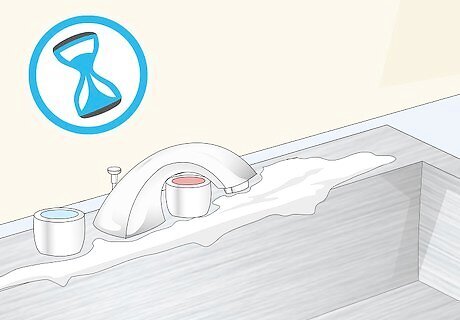
Let the product dry on. The amount of time this takes varies on the type of cleaner. The product should dry on until it has a hazy texture.

Rinse off the product. Use a rag or paper towel to wipe off the product. If you were successful, the product have lifted the scratch from the stainless steel. If the scratch was not removed, try a stronger product like a scratch remover.
Buffing Out the Scratch
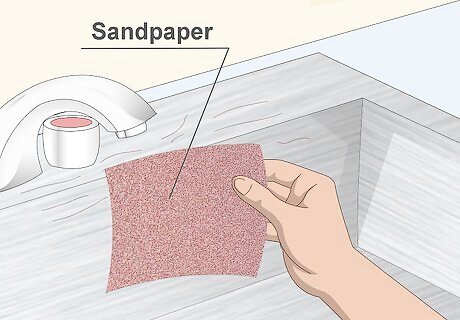
Use Scotch bright pads or sandpaper. Either low grit sandpaper or scotch bright pads are abrasive enough to remove a scratch from a stainless steel sink. Pick up sandpaper or pads at a department or hardware store if you want to use this method to remove a scratch. Sandpaper is usually the best option for very deep, noticeable scratches while bright pads work better for light scratches.
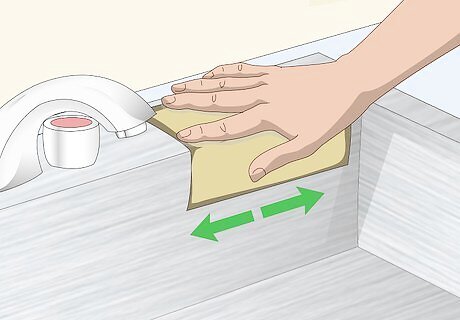
Buff out the scratch. Rub the pad or sandpaper against the scratch, going in the direction of the sink's grain. Use even, long streaks as you buff out the stain. Keep going until the scratch fades away.
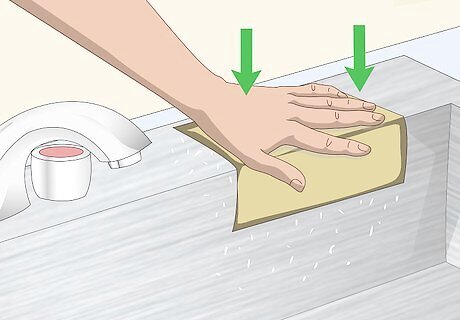
Make sure to apply even pressure. You need to be applying pressure evenly across your sandpaper or pad for this method to work. When using sandpaper, it can help to wrap your sandpaper around a wood block to help distribute the pressure evenly.




















Comments
0 comment